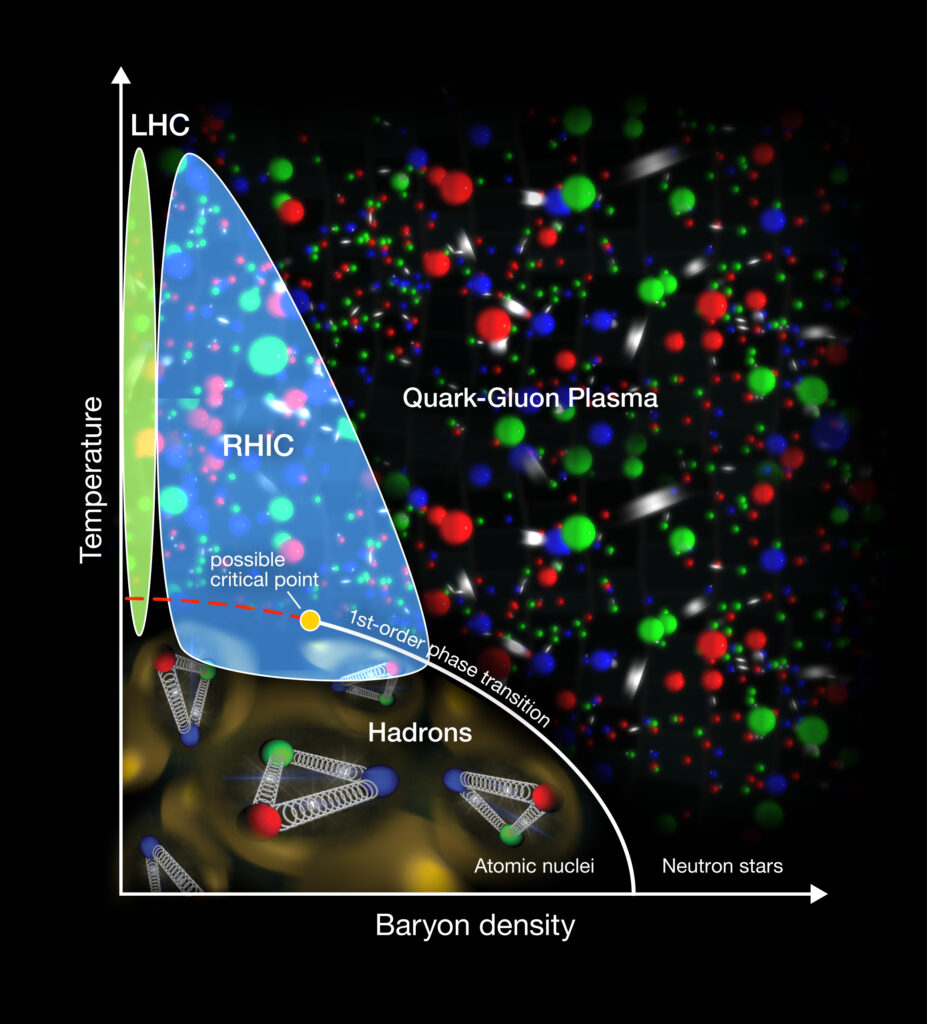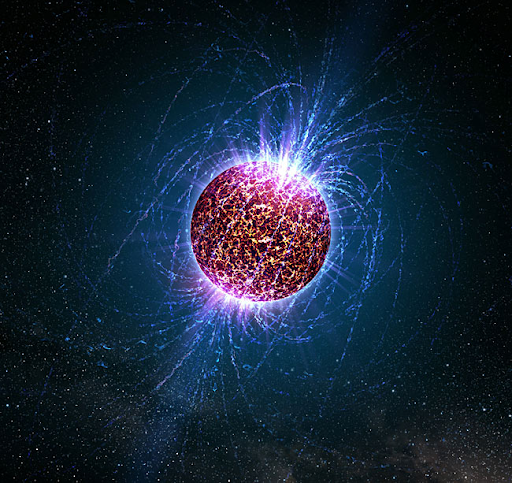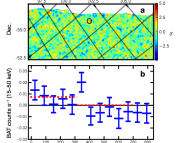Authors: Jun-Yi Shen, Yuan-Chuan Zou, Shu-Hua Yang, Xiao-Ping Zheng, Kai Wang
First Author’s Institution: Huazhong University of Science and Technology, Wuhan, China
Status: Submitted to ArXiv [Open Access]

Astronomers are infamously bad at naming things. So when we observed unexplained quick radio pulses in 2007 we imaginatively dubbed them fast radio bursts (FRBs). However, a name does not a physical theory make: the exact cause of these FRBs is still unknown. FRBs are bonkers energetic, putting out as much energy in about a millisecond as the sun does in three days. The huge energy involved likely implies FRBs originate from the most extreme objects or events in our universe, such as neutron stars, black holes, supernovae, et cetera. Also, some FRBs repeat their bursts, but these repetitions are not evenly spaced in time. This rules out cataclysmic one-time events such as mergers or supernovae, while their uneven spacing is confusing as orbital events have a regular period. A breakthrough came when an FRB was observed from SGR 1935+2154, a highly magnetic neutron star called a magnetar. While this discovery strongly suggests that at least some FRBs come from magnetars, we are still unclear exactly how magnetars generate these pulses. The authors of today’s paper have an interesting hypothetical explanation that will take us deep into the cores of neutron stars: could phase transitions from neutrons to quark matter be causing these mysterious events?
Neutron Star Anatomy Crash Course

To understand the cores of neutron stars we first have to understand quarks. You may have heard of quarks, three of them make up protons and neutrons, and we call any particle made up of quarks a hadron. In fact, we have never observed quarks outside a hadron, this is due to a phenomenon called quark confinement. (A proof of quark confinement is one of the millennium prizes in mathematics, so if you think you have it, you should collect your one million dollars!) However, in extreme enough environments hadrons “melt” into a quark-gluon plasma (QGP), affectionately referred to as quark-gluon soup. Delicious! In the plasma, quarks are freed from their enforced trios and can travel unconfined. As you might have guessed given the topic of this bite, it is hypothesized that the extreme density at the core of neutron stars may be enough to create QGP. However, at the surface of the neutron star, called the crust, the energy densities are too low for this plasma to exist, and all of the quarks are locked up in neutrons. Hence, there must be some transition point between the hadronic phase (the neutrons) and the quark phase (QGP) within the neutron star.
Phase Transitions

A phase transition is when the state of matter changes, such as water freezing or boiling. The authors predict that a phase transition in the magnetar could cause FRBs. To show this, they need a neutron star’s equation of state, (EOS) which describes how pressure is related to its density. Finding the EOS of a neutron star is an area of active research, so the authors use a combination of many papers working on the problem to give expressions for the EOS of the outer hadronic crust and the gooey quark soup center. What happens where these two regions meet? Previous models assumed that these two regimes met and didn’t interact much, but the authors argue that the two phases meet and mix slightly. The authors use thermodynamic arguments to show that droplets of the quark soup could appear in the hadronic matter. This mixing allows matter to stay in the hadronic phase deeper into the star than expected, i.e., beyond the point where it would normally become QGP: this phenomenon of the hadronic matter trespassing into what should be the QGP regime is called a metastable state. Metastable is a fancy way of saying kinda-stable. It only takes a little bit of a bump for a metastable state to collapse to the more stable of the two phases it borders, and it does so quite rapidly. You may have seen videos of people squeezing water bottles and they freeze very quickly, this is an example of water coming out of a metastable state. The authors hypothesize that some of the hadronic matter will start in the metastable state, but as the neutron star’s spin slows down over the course of its life, the pressure will increase in the core and cause the hadronic matter to fully convert to quark matter. This change to the denser phase would cause the star to suddenly shrink in size, and the lost gravitational potential energy would be released as an FRB, see Figure 3. Could this be enough energy to power the FRBs we observe?
Modeling the Collapse

To find out, the authors solve the Tolman–Oppenheimer–Volkoff (TOV) equation (Yes, that Oppenheimer with the new movie coming out, though unfortunately trailers imply it’s not about his contributions to astrophysics) which describes a rotating sphere of material in gravitational equilibrium in general relativity, an excellent model of a neutron star. The authors use the TOV equation to calculate the energy released by the neutron star as it shrinks under the phase shift for a variety of possible EOSs and models of the mixing region. They find that for appropriate choice of the EOS, the energy released by the phase transition would be enough to power SGR 1935+2154 , and would occur roughly often enough to explain observations of repeated bursts! The authors also note that the star would only shrink by about a micrometer, and yet the system is so extremely dense that this is enough to release the energy required. In addition, this rapid shift in radius would cause a starquake called a glitch, where the magnetar suddenly increases its spin thanks to conservation of angular momentum. Their model predicts a glitch size that is comparable to glitches observed in SGR 1935+2154. In addition, neutron stars have been observed to undergo seemingly random decreases in their spin, called anti-glitches. Since the exact timing of the transition in this model is dependent on the spin of the neutron star, this could explain the variability in the period of FRBs.
While these results are exciting, there are many hurdles to overcome. For instance, the authors note that while the energy scales match, they do not yet have a proposed mechanism for how this energy actually becomes radiation in the form of a radio pulse, while other models do. Nevertheless, the authors highlight that future gravitational wave observations of an FRB would be an excellent way of testing their model, as their use of a general relativistic model of an FRB would allow them to directly predict the type of gravitational wave we see. Thus, while the mystery may be unresolved, the hunt to understand FRBs will push us to understand the most extreme environments in our universe and unite disparate areas of physics and astrophysics.
Astrobite edited by Pranav Satheesh
Featured image credit: Kat Nurminsky




